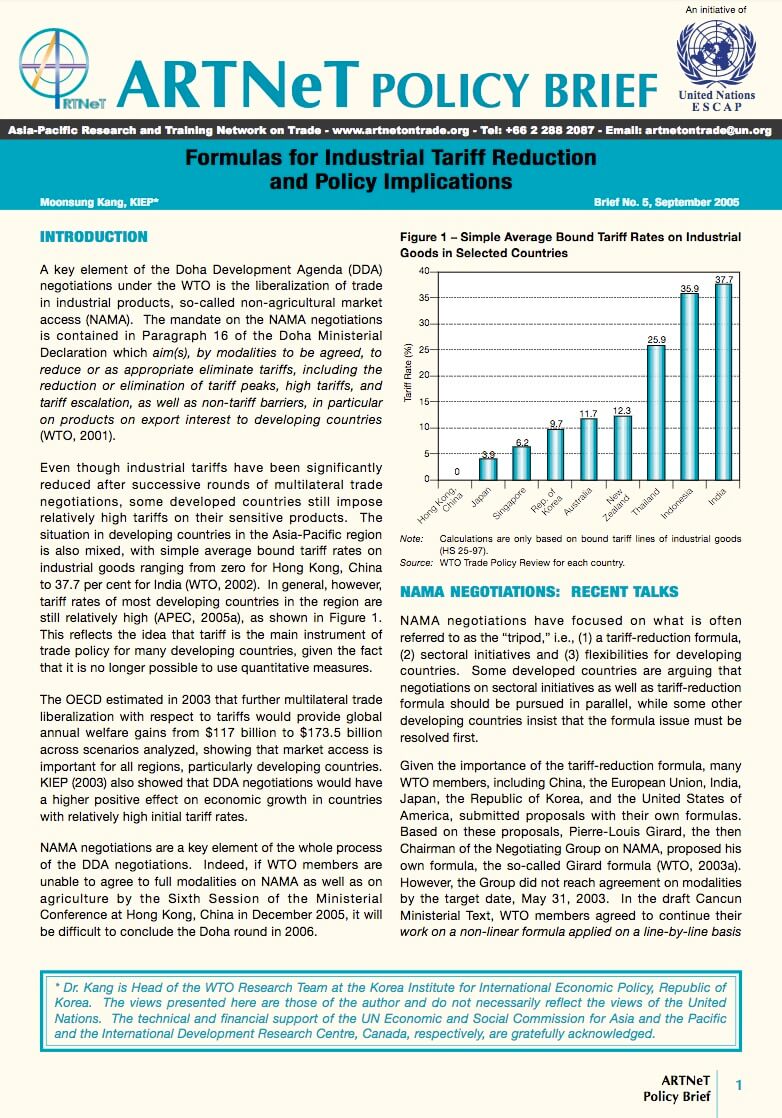Formulas for Industrial Tariff Reduction and Policy Implications

A key element of the Doha Development Agenda (DDA) negotiations under the WTO is the liberalization of trade in industrial products, so-called non-agricultural market access (NAMA). The mandate on the NAMA negotiations is contained in Paragraph 16 of the Doha Ministerial Declaration which aim(s), by modalities to be agreed, to reduce or as appropriate eliminate tariffs, including the reduction or elimination of tariff peaks, high tariffs, and tariff escalation, as well as non-tariff barriers, in particular on products on export interest to developing countries (WTO, 2001).
Even though industrial tariffs have been significantly reduced after successive rounds of multilateral trade negotiations, some developed countries still impose relatively high tariffs on their sensitive products. The situation in developing countries in the Asia-Pacific region is also mixed, with simple average bound tariff rates on industrial goods ranging from zero for Hong Kong, China to 37.7 per cent for India (WTO, 2002). In general, however, tariff rates of most developing countries in the region are still relatively high (APEC, 2005a). This reflects the idea that tariff is the main instrument of trade policy for many developing countries, given the fact that it is no longer possible to use quantitative measures.
